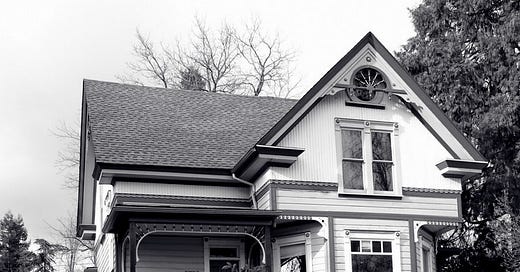This Land is Made for…Housing? Mining for Affordability by Mapping Oregon’s Public Lands
Oregon needs more housing of every kind to combat the affordability crisis
EDITOR’S NOTE: This piece is a part of our #GovernorGoals series. Learn more about it here. Send your goals on one of the selected topics to theway@or360.org for potential publication.
Oregon’s housing crunch is a generation in the making. Since 1991, only three states have witnessed price appreciation higher than Oregon according to the Federal Housing Finance Agency. Further, Oregon has the second-lowest number of housing units per household in the country.
Today, Oregon’s housing market poses significant challenges for people young and old, urban and rural alike. According to the National Low Income Housing Coalition (NLIHC), Oregon is the 11th least affordable state in the country in terms of wages needed to afford a two-bedroom apartment ($25.14 statewide vs. a projected average wage for renter households of just $17.30/hour).
The challenge is most severe for extremely low income families (ELI), defined as those whose incomes are at or below the poverty guideline or 30% of their area median income (AMI). Nearly 80 percent of ELI households spent over half their income on housing, compared to just 8 percent of low-income households.
Worse yet, ELI households, which represent over one in five renter households in the state, include many of the most vulnerable residents of Oregon. 30 percent of ELI families are seniors. Over 20 percent include at least one person with a disability.
Oregon needs more housing of every kind to combat the affordability crisis. As a report last year by Oregon Housing and Community Services (OHCS) and ECONorthwest found, we need to build 30-40,000 new homes every year for the next 20 years—nearly doubling the current pace of production—with one-third of these units needing to be affordable to ELI and other very low-income households.
As a result, significant public investment is required. But how that investment takes place and the creativity with which we approach the problem is in the hands of the next governor and the next generation of Oregon’s Congressional delegation.
Given that the cost of land is one of the most expensive line items for housing development, one solution is to leverage public lands for housing production. As shown in extraordinary detail by The Oregonian, more than half of Oregon’s 63 million acres is owned by the Federal Government and operated via the Bureau of Land Management or Forest Service. An additional 780,000 acres are state lands, with still more owned by counties and cities across the state.
Oregon needs a thorough mapping of these lands to determine which parcels are appropriate for affordable housing construction—from parking lots in Springfield and aging courthouses in Corvallis, to old senior centers in Florence and ancient steam plants awaiting a second life in Eugene.
I wrote a report proposing exactly this in New York City, projecting that public lands could be leveraged to build over 50,000 permanently affordable units. The City has subsequently broken ground on several sites, including transforming an old parking lot into affordable housing.
Oregon has taken steps to encourage local governments to purchase property for affordable housing via the Affordable Housing Land Acquisition Revolving Loan Program (LAP).
However, by mapping parcels that are already publicly-owned, the next governor will be able to work across governments (local, county, state, federal, and tribal) to efficiently work with nonprofit and other affordable housing developers and get shovels in the ground.
As a candidate for Congress in Oregon’s 4th District—an area replete with affordable housing challenges, including the highest homelessness rate per capita in the country (Eugene)—I look forward to working with the next governor to solve this urgent challenge with innovative ideas and committed community partners. There’s no time to waste.
I'm a proud Oregonian, the lucky spouse of @AdamsKalloch & father of three. Former: ACLU lawyer/Policy wonk. Current: Candidate for Congress, OR-4.
Photo credit: "Downtown House" by Slideshow Bruce is licensed under CC BY-SA 3.0




